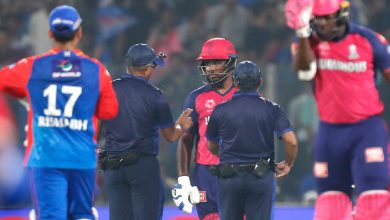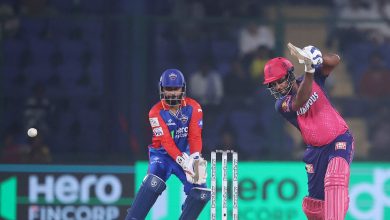Why Carlos Alcaraz should try the pickle juice next time he suffers from cramps

In the backdrop of Novak Djokovic’s 23rd Grand Slam victory lay the ruins of what could have been a match of epic proportions between the Serbian and Carlos Alcaraz. Alcaraz, Spain’s latest sensation on clay, was geared to be Djokovic’s biggest test on his run to Roland Garros’ summit. But what followed was two sets of intense action followed cramps faced Alcaraz, who then had to lower his gears down and play the rest of the match at a lower level. With that magical ability to chase down impossible balls lost, he eventually gave way in the last two sets and succumbed to Djokovic 3-6, 7-5, 1-6, 1-6.While Alcaraz clutched at different parts of his body in pain, at one point being comforted Djokovic himself, commentators spoke off the magic of unconventional treatments like pickle juice that help athletes combat cramps. While sport science has taken leaps and strides in helping athletes unlock more and more out of the human body, the talk of pickle juice as a supplement to avoid cramps may have seemed a tad flippant, but the actual usage is rooted in scientific fact.
There is no exact science that points out why cramps happen but the prevailing theories centre around two possibilities – Firstly, the durbance of balance between salt and water levels in the body brings about cramps. Secondly, continued activity despite muscles being fatigued leads to the onset of cramps.
“Most athletes walk around in a dehydrated state,” said Randy Bird, director of sports nutrition at the University of Virginia to the Washington Post in 2016. “It’s not an acute problem; it’s a gradual problem throughout the week. Monday they practice and don’t properly hydrate, and Tuesday they do it again. And then, bam, it’s Saturday, and they’re very dehydrated.”
How did the cramps affect Alcaraz?
Two gruelling sets against one of the greatest returners in the game of tennis under hot, sweltering conditions – Alcaraz’s game stepped up and then some over the first two sets. But the combination of nerves along with the acute physical toll his body was taking, couldn’t handle it any longer.
“I would say the first set and the second set were really, really intense and I started to cramp in my arm. At the beginning of the third set I started to cramp every part of my body, not only the legs. The arms, as well, every part of the legs,” said Alcaraz to reporters after the match. “The tension. The tension of the match. I started the match really nervous. The tension of the first set, the second set, it was a really intense two sets.”
Alcaraz has had to deal with the cramps issue earlier as well. It was the third round of the 2021 US Open where he beat Stefanos Tsitsipas in a fifth-round tiebreaker. But the situation then was, according to him, ‘not this magnitude’.
What kind of supplements help athletes in these situations?
Liquids and electrolytes are key in the recovery of an athlete from cramps. Electrolytes contain potassium, sodium, magnesium and calcium – essential nutrients that are necessary to correct the imbalance that the body feels and reacts to in the form of cramps. Oftentimes, athletes are seen eating bananas, a key provider of potassium as well as magnesium and calcium – an effective method of helping against cramps.
But another variant of quickly dispersing electrolytes through the body is pickle juice.
How pickle juice is a wonder ingredient for the modern athlete?
What’s common between American tennis player Francis Tiafoe, Indian batsman Cheteshwar Pujara, the Indian women’s hockey team and Arsenal midfielder Lucas Torreira? All these athletes at some point or the other have trusted pickle juice as an effective method to reduce cramping during extreme physical activity.
Dr Mayur Ranchordas – a senior lecturer in sport nutrition and exercise metabolism at Sheffield Hallam University spoke to BBC Sport and explained why the peculiar drink works on athletes.
“Pickle juice contains sodium, potassium and vinegar and the obvious conclusion would be that it replaces sodium and salts lost when playing sport in a hot and humid environment like the Australian Open thus preventing cramping,” said Dr Ranchordas. “However, how it really works is that it triggers a reflex in the mouth which sends a signal to stop muscles from cramping. That’s why it is drunk at the onset of cramps. It stops cramping 40% faster than drinking water.”
How the Indian women’s hockey team used pickle juice at the Tokyo Olympics?
The use of pickle juice is so prevalent across top level sport that the Indian women’s hockey team used it extensively during the Tokyo 2021 Olympics – a tournament where they finished fourth. The proponent of it was India’s strength and conditioning coach at the time, Wayne Lombard. Lombard has worked with some of India’s best athletes, including two-time World Championship bronze medall Vinesh Phogat.
For the Tokyo Olympics, he told The Indian Express that he had prepared 100 shots of pickle juice to be consumed as a drink or to be gargled and spat out. “When it was back-to-back games, the girls would drink that after breakfast, or depending on when the game was. And then, at the onset of cramps they would have additional shots if required,” he said.
In the hot conditions of Tokyo, where the women’s team was supposed to mostly play during day time, not a single incident of cramps took place through the entire tournament.







